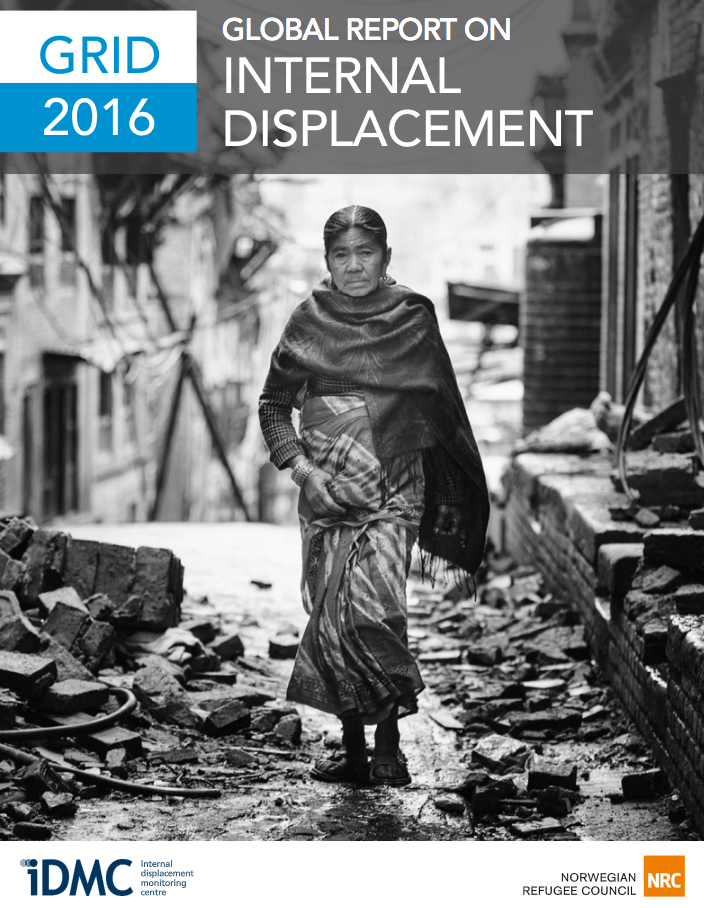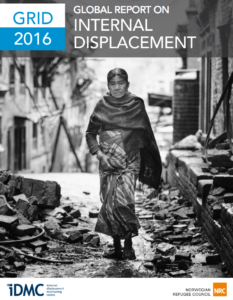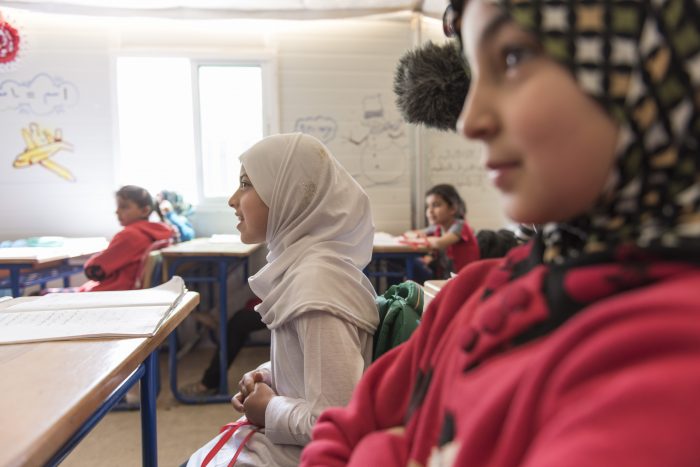How Donors Can Reverse Tragic IDP Trend
“The global phenomenon of internal displacement shows few if any signs of abating. The responses of national governments and the international community to date have all but failed to limit its scope, let alone reverse the upward trend in internally displaced persons (IDPs).” In May, the International Displacement Monitoring Centre released its flagship Global Report […]

“The global phenomenon of internal displacement shows few if any signs of abating. The responses of national governments and the international community to date have all but failed to limit its scope, let alone reverse the upward trend in internally displaced persons (IDPs).”
In May, the International Displacement Monitoring Centre released its flagship Global Report on Internal Displacement (GRID).
The findings are tragic:

- There were 27.8 million new displacements in 127 countries during 2015, more than the total populations of New York City, London, Paris, and Cairo combined.
- There were 40.8 million people internally displaced worldwide as a result of conflict and violence as of the end of 2015. This represents an increase of 2.8 million from our 2014 estimate and the highest figure ever recorded. It is twice the number of refugees in the world.
- There were 8.6 million new displacements associated with conflict and violence in 28 countries in 2015.
- There were 19.2 million new displacements associated with disasters in 113 countries, more than twice as many as for conflict and violence. Over the past eight years, 203.4 million displacements have been recorded, an average of 25.4 million each year.
- 4.5 million displacements were brought on by large-scale geophysical hazards. This was higher than the annual average, driven up by the Nepal earthquake disaster.
With figures this daunting and the trend line increasing, where can philanthropy make a difference?
- Funding – Continue to allocate much needed dollars to local and international NGOs working in disaster and conflict zones. Afghanistan, DRC, Syria and surrounding countries, Somalia, and Nepal are all deeply affected by the needs of displaced persons. These vulnerable communities need shelter, water, education, a way to earn a living, and protection. Funding from philanthropy can support these unmet needs. Concern and Mercy Corps are CDP grantees working to meet protection needs of IDP communities in Syria.
- Advocacy – Reach out to governmental leaders and let them know that the needs of internally displaced people, wherever they may be, is of concern to you and your organization. Encourage leaders—within the United States as well as within the United Nations system—to fully fund existing commitments to support global development commitments. The International Crisis Group works tirelessly to prevent conflict worldwide and have been very active in expressing their grave concern about the IDP crisis in the Middle East.
- Educate and Inform Others – Robust data and information exist on the plight of refugees and internally displaced persons globally (including the awesome report I cite above). As Bill Paton and I say in our report, “A Pivot Point in Philanthropy’s Contribution to Addressing Humanitarian Crises,” that we authored for the World Humanitarian Summit, remaining ignorant about global crises is no longer an option. Use the knowledge gathered by humanitarian experts to end the crises.
- Align Missions – As I mention above, the needs of IDPs are relentless and cover just about every human need possible. If your foundation has a focus on homelessness, then I encourage you to carve out a portion of your funding to go to shelter needs within the IDP context. If you support the arts, then allocate arts funding to an organization supporting therapeutic arts programming within an IDP camp or community. Trust me, the ways to align your organization’s mission with the needs of an IDP community are endless. A perfect example is the NoVo Foundation. An organization dedicated to systematically investing in the advancement of girls, the NoVo Foundation awarded funding to the International Rescue Committee for their work to reduce the vulnerability of refugee girls exposure to gender based violence.
Before I close up, I wanted to ensure shared understanding of international definitions of refugees and internally displaced persons.
A refugee is someone who has been forced to flee his or her country because of persecution, war, or violence. A refugee has a well-founded fear of persecution for reasons of race, religion, nationality, political opinion, or membership in a particular social group.
Internally displaced persons (IDPs) are defined as persons or groups of persons who have been forced or obliged to flee or to leave their homes or places of habitual residence, in particular as a result of or in order to avoid the effects of armed conflict, situations of generalized
violence, violations of human rights or natural or human-made disasters, and who have not crossed an internationally recognized border.
My sincerest thanks go to the International Displacement Monitoring Centre for publishing this incredible report.
More like this

Investing in Hope for Young Syrians

